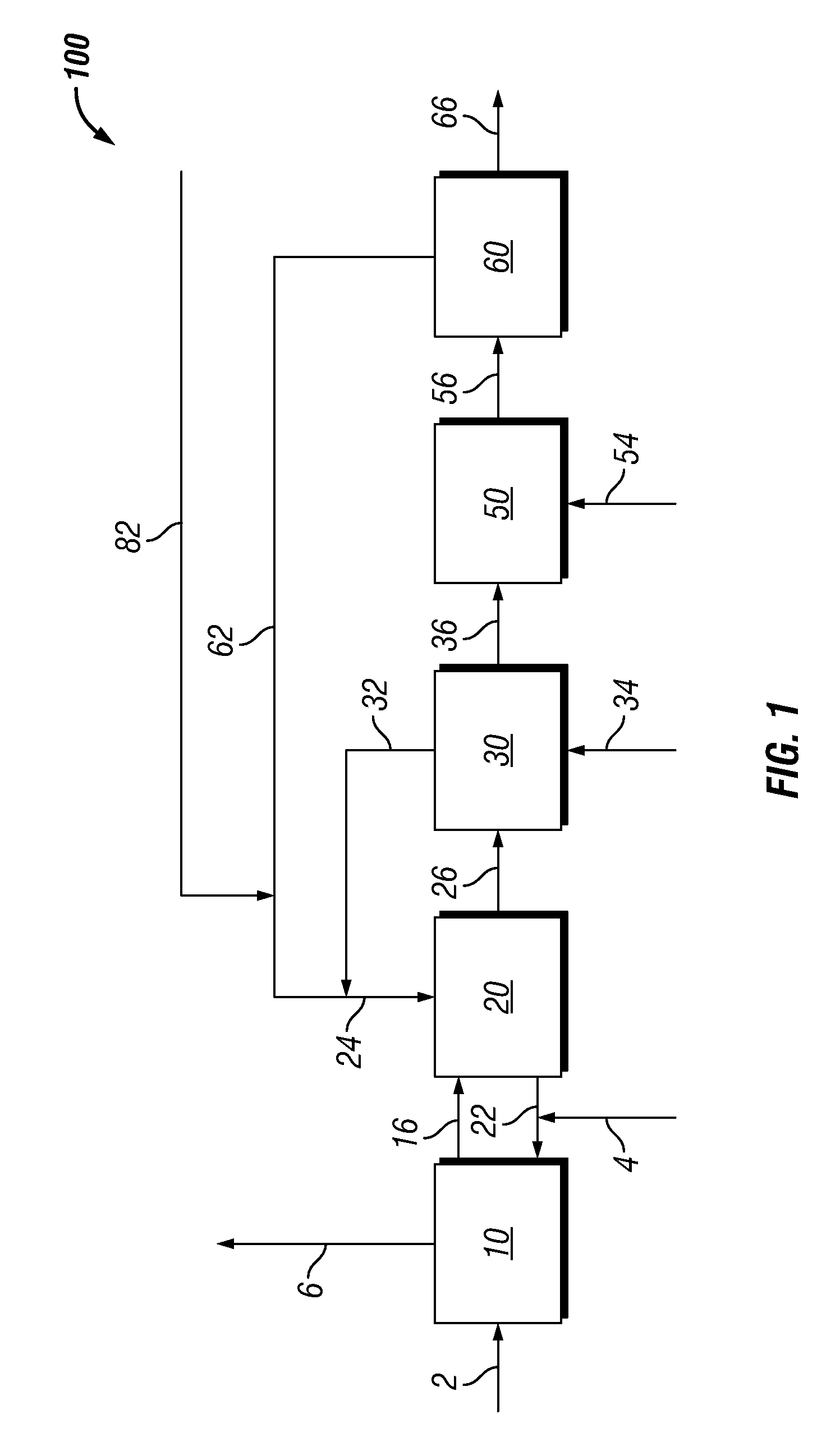Biomass treatment for hydrothermal hydrocatalytic conversion
a technology of hydrocatalytic conversion and biomass treatment, which is applied in the direction of lignin derivatives, pulp liquor regeneration, glucose production, etc., can solve the problems of difficult penetration of lignocellulose biomass structure with chemicals, difficult to break down the long chain polymeric structure of cellulose into carbohydrates that can be used to produce fuel, etc., to reduce the effectiveness of hydrothermal hydrocatalytic treatment and minimize the amount of water used
- Summary
- Abstract
- Description
- Claims
- Application Information
AI Technical Summary
Benefits of technology
Problems solved by technology
Method used
Image
Examples
examples 1-5
Base Wash
[0102]A series of biomass pretreatment experiments were conducted in 15-mm or 25-mm diameter glass chromatography columns (Ace Glassware), with pretreatment solutions fed from glass buret via a Low-Flow Compact Metering Pump, 30 mL / min maximum, 115 VAC, from Cole Parmer (WU-07115-10). A retriever 500 fraction collector from Isco / Teledyne was used to collect sample fractions. Southeaster US pine wood was ground to a dimension of approximately 8-mm×3-mm×3-mm using a “Retsch Grinder” Model SM100 is a rotating knife blade grinder.
[0103]Samples of the feed wood, and wood following treatment were analyzed for metals via combustion, then dissolution of the resulting ash in sulfuric acid for analysis by plasma emission spectroscopy. A second sample was analyzed by ion chromatography to determine the chloride content of the wood samples.
[0104]Treatments for the biomass wash sequence entailed use of 0.5N KOH, deionized water, and 25% ethanol in deionized water.
[0105]The volume of the...
example 6
[0109]A 15-mm inside diameter×24 inch glass chromatography column was charged with 23 inches of ground pine wood with moisture content of 52.4%, measured by drying of a sample in a vacuum oven overnight at 86° C. 39.6 grams of wood were charged. Ethanol (less than 1000 ppm H2O) was charged as solvent to a feed buret. The solvent was flowed upflow through the column at 0.8 ml / min using a Low-Flow Compact Metering Pump, 30 mL / min maximum, 115 VAC, from Cole Parmer (WU-07115-10). A retriever 500 fraction collector from Isco / Teledyne was used to collect sample fractions. Southeaster US pine wood was ground to a dimension of approximately 8-mm×3-mm×3-mm using a “Retsch Grinder” Model SM100 is a rotating knife blade grinder.
[0110]Samples were collected in 50-ml fractions (0.48 bed volumes MVP, and analyzed by Karl Fisher titration for water content. At the end of 3.9 bed volumes of solvent wash, the cumulative water removed corresponded to 103% of the assessed water content ...
example 7
Gas Displacement
[0111]A 15-mm glass chromatography column was packed to a bed length of 22.5 inches with ground wood. The column was subjected to 1% sulfuric acid, water, and 0.5N base wash, followed by a final water rinse. Approximately 60 ml of final aqueous phase was drained from the bed at the end of the treatment sequence, representing 59% of the total bed volume.
[0112]This example represents draining of interstitial liquid from a water-wet bed, to remove a substantial (greater than 50%) portion of the liquid used to push base wash through the bed. The drained water can be re-used for subsequent wash steps.
PUM
| Property | Measurement | Unit |
|---|---|---|
| temperature | aaaaa | aaaaa |
| pressure | aaaaa | aaaaa |
| temperature | aaaaa | aaaaa |
Abstract
Description
Claims
Application Information
 Login to View More
Login to View More - R&D
- Intellectual Property
- Life Sciences
- Materials
- Tech Scout
- Unparalleled Data Quality
- Higher Quality Content
- 60% Fewer Hallucinations
Browse by: Latest US Patents, China's latest patents, Technical Efficacy Thesaurus, Application Domain, Technology Topic, Popular Technical Reports.
© 2025 PatSnap. All rights reserved.Legal|Privacy policy|Modern Slavery Act Transparency Statement|Sitemap|About US| Contact US: help@patsnap.com


